There are two words that come to mind while visiting the Grand Canyon Pioneer Cemetery: mystic and beautiful.
As a first-time Grand Canyon National Park visitor, I am in awe of the expanse and beauty of the canyon. And, as a Certified Memorialist, I am equally struck by the park’s desire to honor those who helped build it.
Historic memorials may be found on buildings, viewpoints and museums. But my favorite memorials, the ones that give me a taste of the true park community, culture and history, are found at the Grand Canyon Pioneer Cemetery.
Grand Canyon Pioneer Cemetery
The Grand Canyon Pioneer Cemetery is located next door to (West of) The Shrine of Ages. If you follow park signs to The Shrine of Ages and pull into the parking lot, you will spot the cemetery tucked back in the trees.

Featuring a combination of native stone and wood, the entrance is built with the same rustic aesthetic as Hermit’s Rest & the Watchtower.
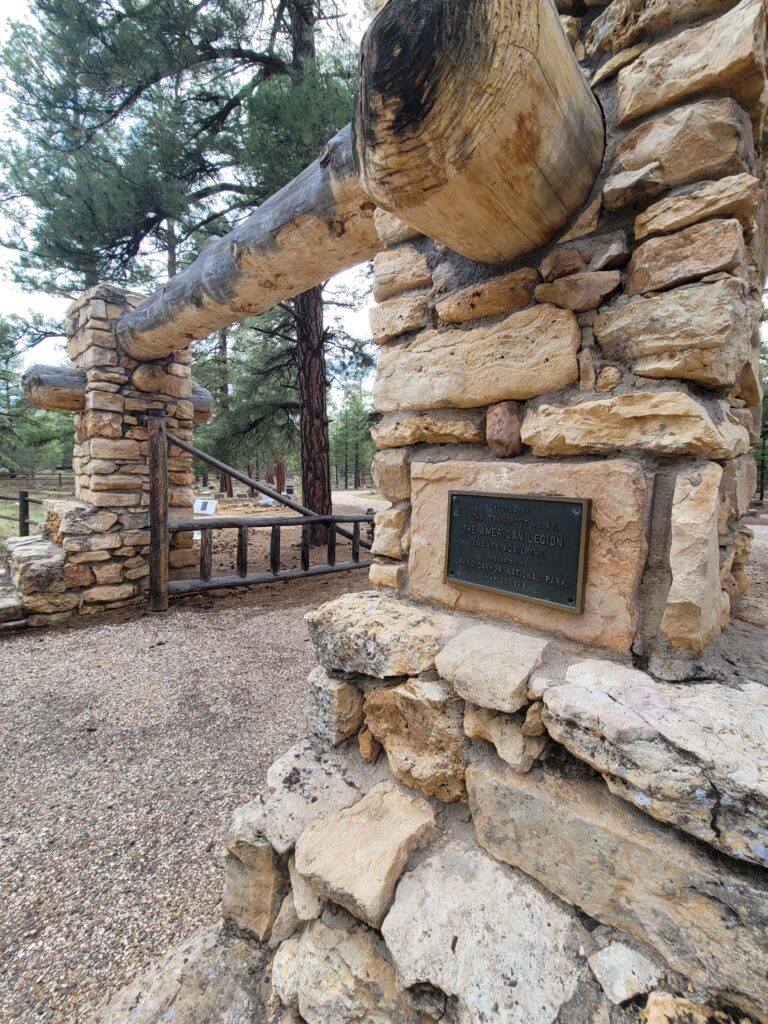
The cemetery is nestled into the shade of tall spruce trees, offering plenty of shade from the often harsh Arizona sun. Rustic benches are located on either side of the entrance, as well as on the North end of the cemetery. These benches are perfect for taking a moment to experience peace, solitude and remembrance away from the crowds.

As you enter the cemetery, the very first memorial to capture your attention is this majestic monument.
Aircraft Crash of 1956 Memorial
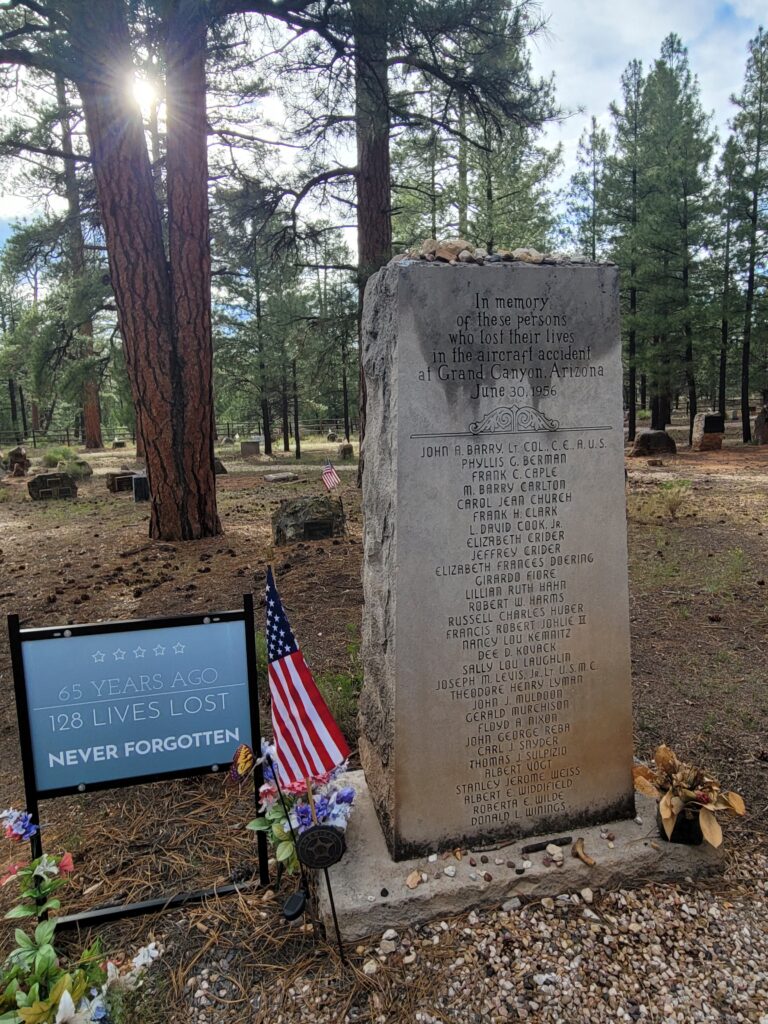
Standing approximately six foot tall, this Georgia Gray granite stone is the tallest in the cemetery. It has a gentle taper on the sides (meaning it is more narrow at the top and flares out on the sides) and keeps with the park’s rustic aesthetic with a rocky top, sides and back.
The inscription reads, “In memory of these persons who lost their lives in the aircraft accident at Grand Canyon, Arizona, June 30, 1956.”
Not being familiar with this event, I choose to do what everyone else does- consult Google. What I learn is both heart breaking and tragic. Two commercial planes, thought to be manuevering to allow passengers a better view of the Grand Canyon, collided mid-air on June 30, 1956, killing everyone aboard both flights.
Of the 128 killed, only the partial remains of 30 individuals were found. A funeral was held on July 9, 1956, and the found remains of 29 individuals were placed in a total of four caskets and buried in the Pioneer Cemetery.
The Grand Canyon 1956 Aviation Memorial honoring those who lost their lives in the crash is found near the Watchtower. The Watchtower is the closest viewpoint to the crash site, where some crash debris still remains today.
A Nod to Permanent Memorialization
One thing I notice about this cemetery, is the underlying theme of permanent memorialization. Because the Park does focus on preserving the nature and beauty of the Grand Canyon, it only makes sense that it would also preserve individual legacies. And doing so requires an understanding of suitable memorial materials and methods; an understanding that is evidenced throughout the cemetery.
A glance around the cemetery exposes a large number of monuments made from native stone. Native stone is not a suitable material for engraving because it lacks natural contrast. When folks engrave on native stone they have to fill the inscription with a special paint to make the inscription stand out. However, when the paint fades over time, so does the visibility of the inscription. This will ultimately lead to losing a written legacy, as the stone becomes un-readable.
To combat this loss of legacy, the Pioneer Cemetery features bronze plaques on native stones. Bronze is a material that endures the test of time. Using it ensures a legacy will not be lost to deterioration.
Bronze And Native Stone Memorials
This beautiful companion memorial is both eye-catching and interesting. It is made of native stone and bronze plaques. You will notice some engraving on the center stone, which will eventually be lost one day. But the important information is permanently captured in the bronze plaques that have been skillfully mounted to it.
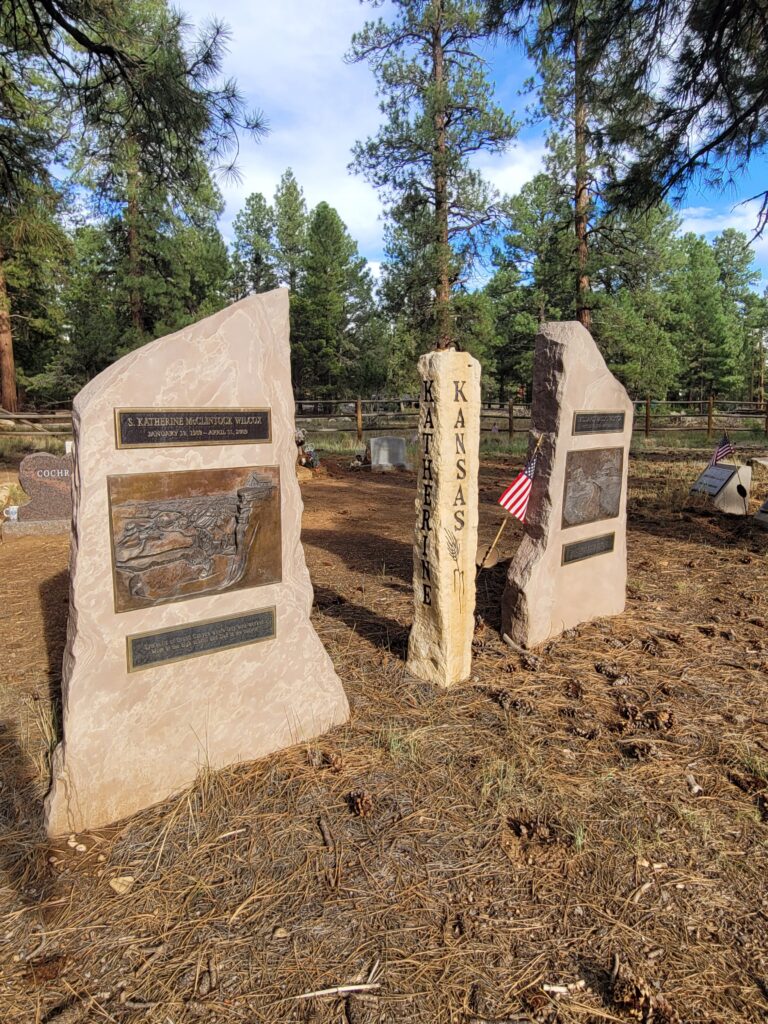
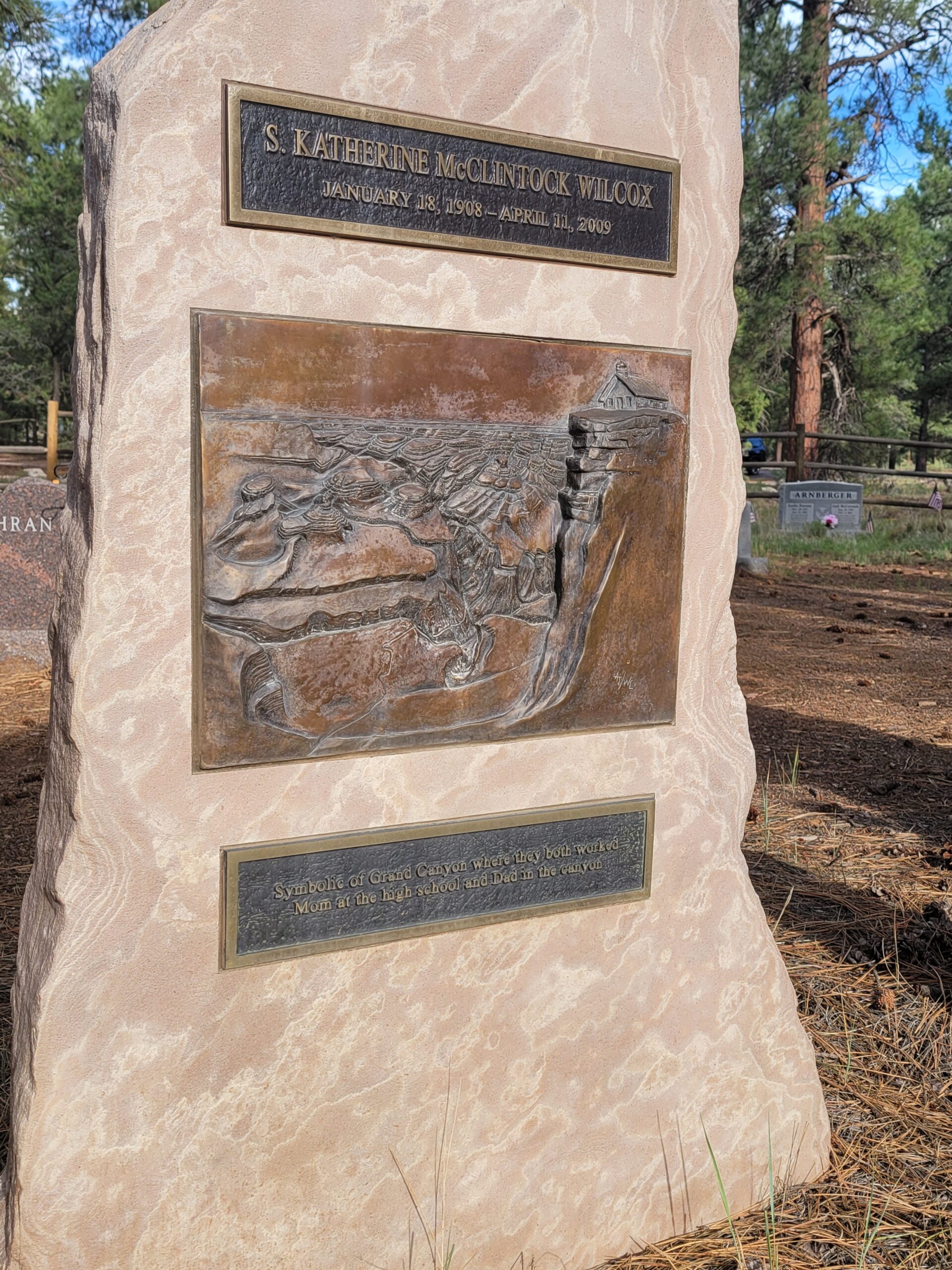

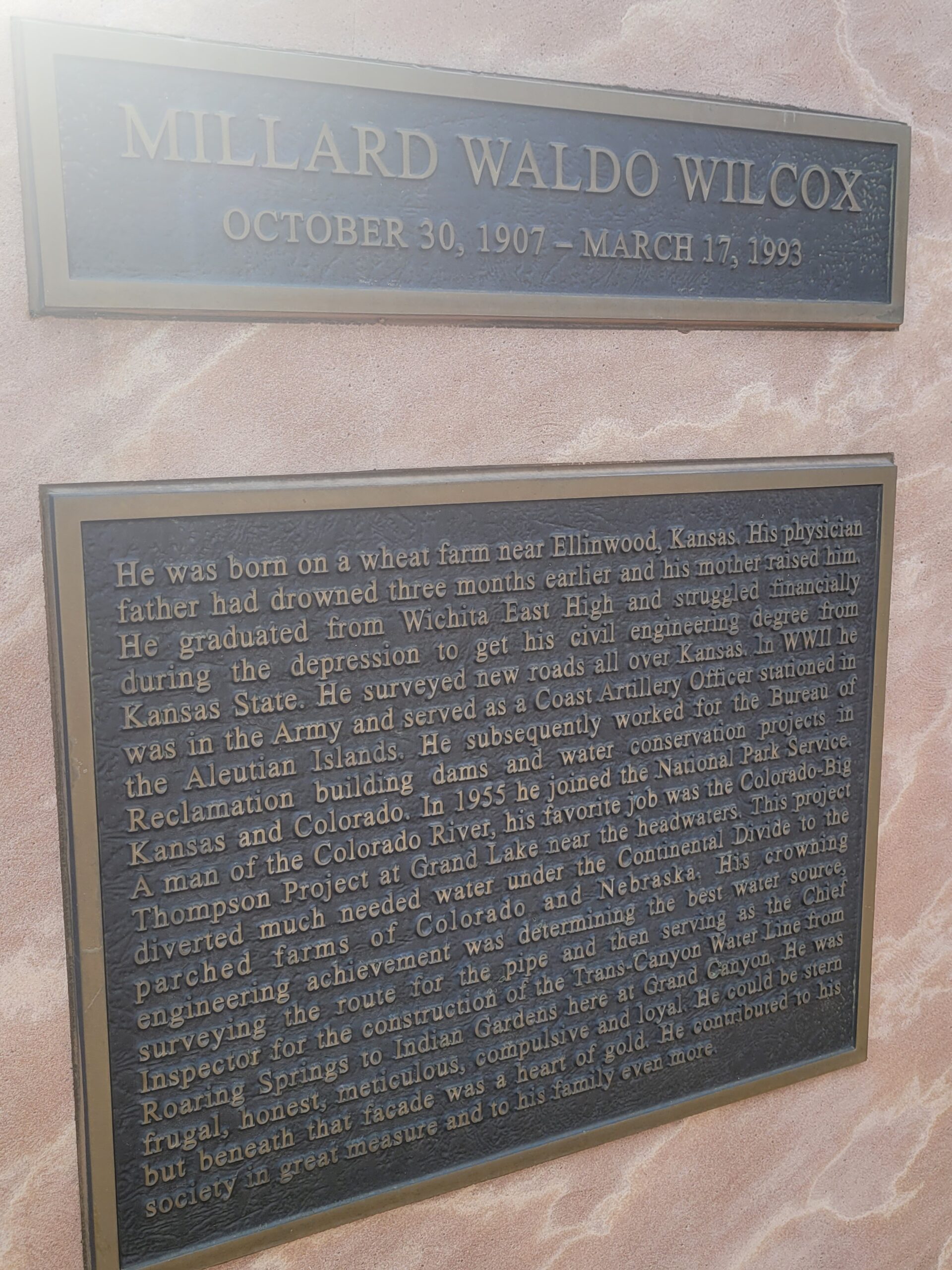
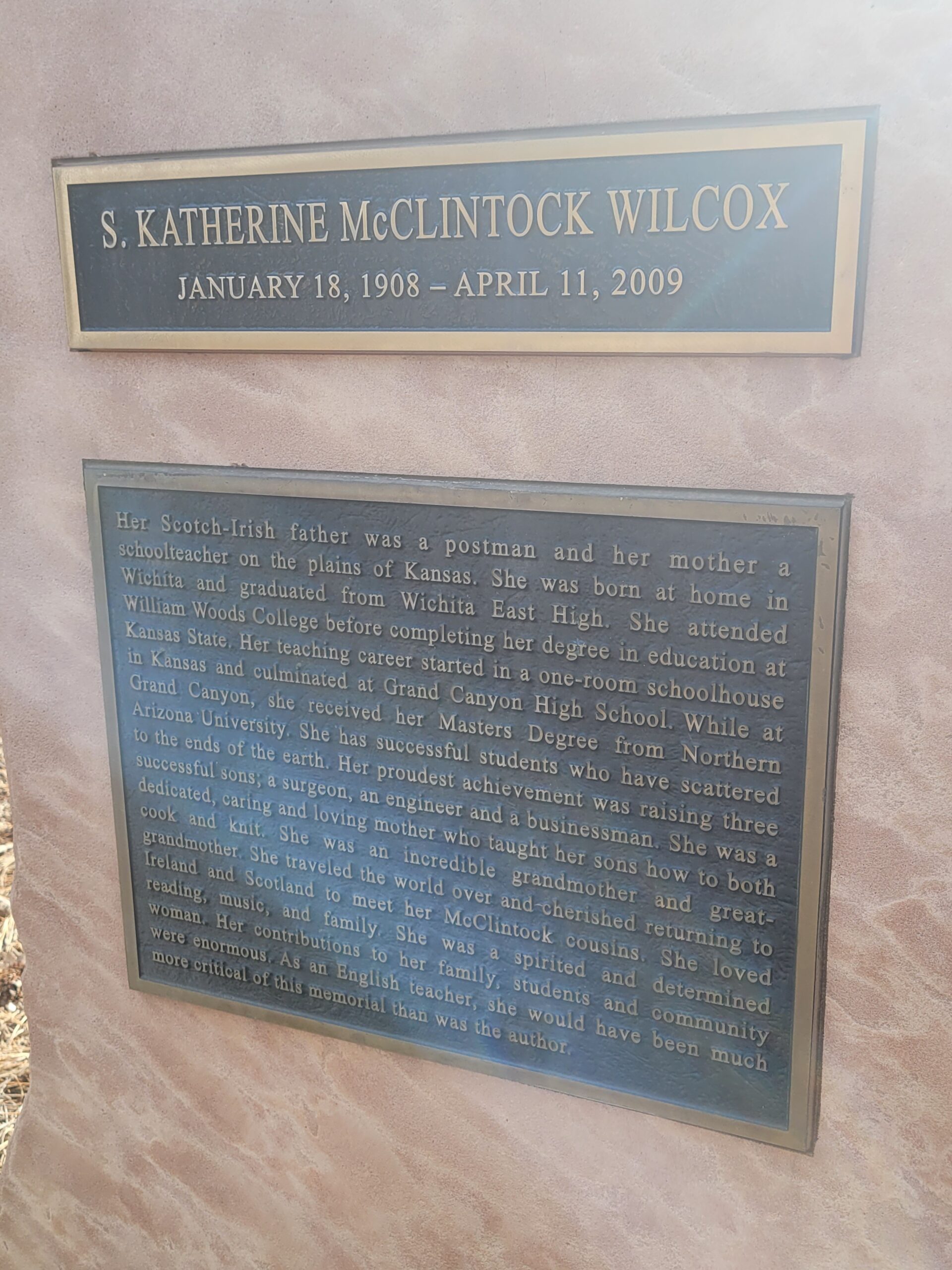
There are countless native stone and bronze memorials throughout the cemetery, including these that I found to be interesting.

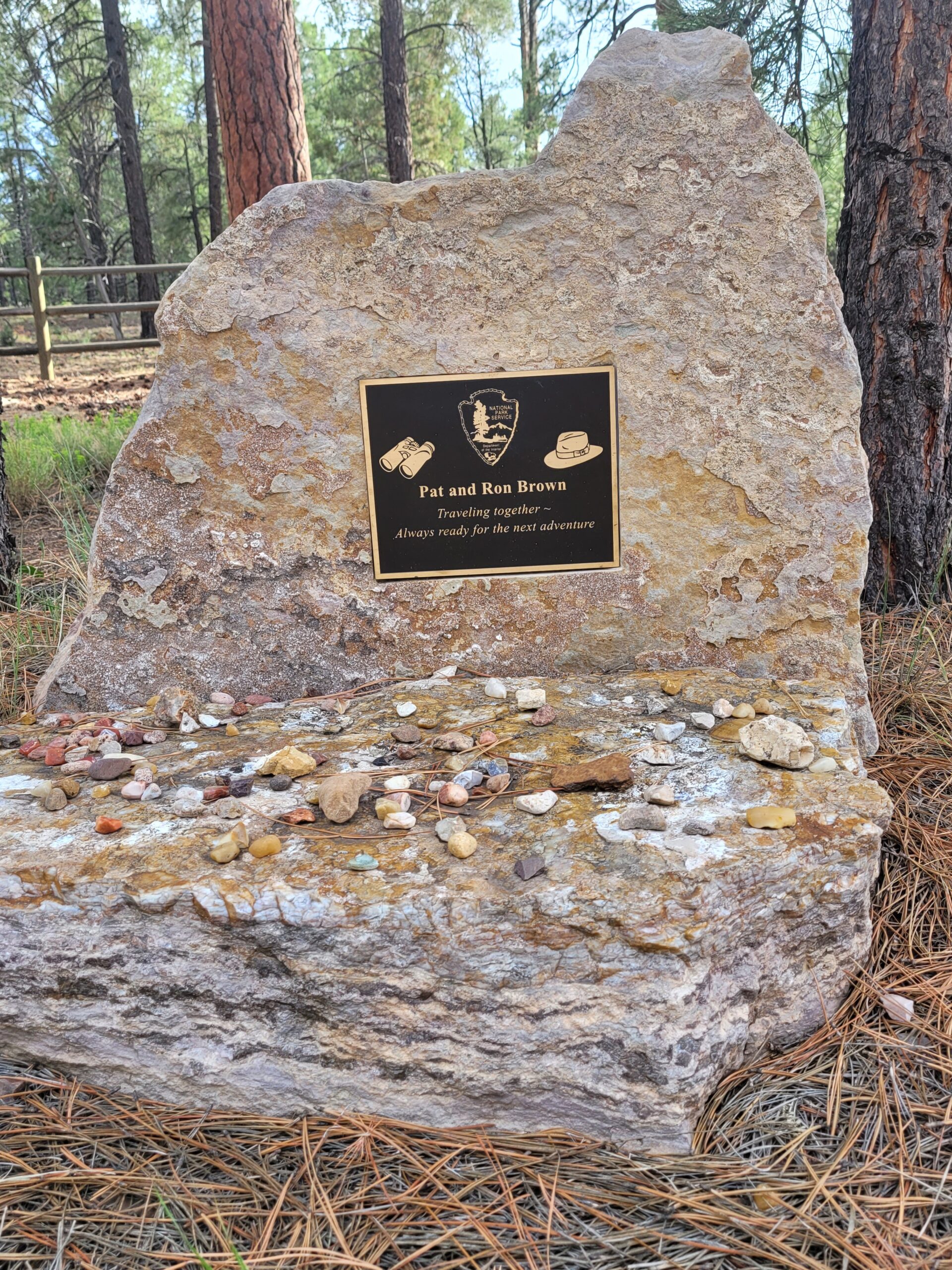
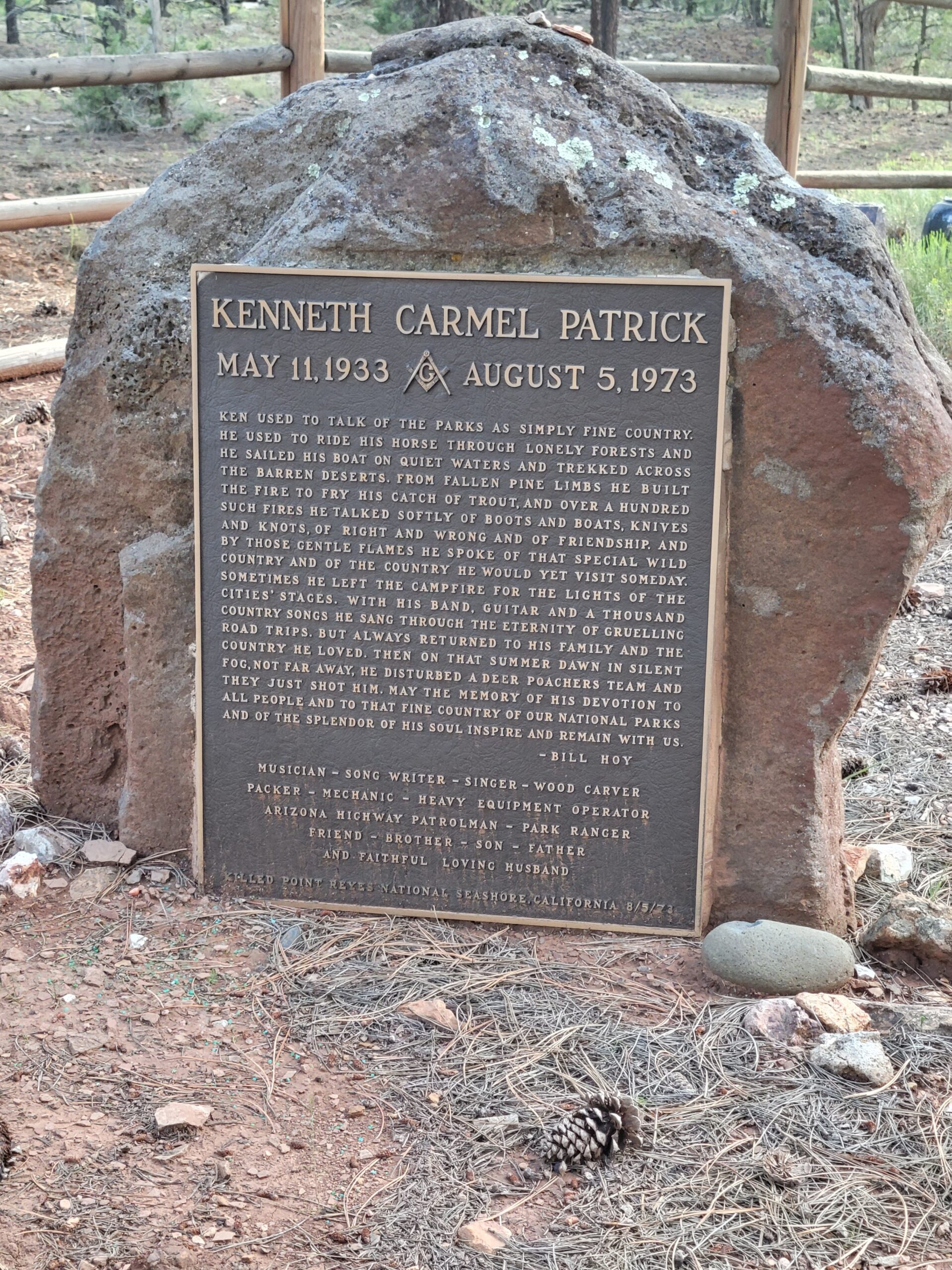
Stopping to Remember
Petrified Wood and Bronze Memorials
Petrified wood is a gorgeous material that I occasionally see in memorialization. The Petrified Forrest National Park is located just East of Holbrook, AZ, and is home to an impressive amount of petrified wood. While it is illegal to remove wood from the park, there are other areas nearby where it may be found and sold as well.
Attaching bronze to petrified wood is a difficult but beautiful way to honor a legacy. Just look at these beauties!
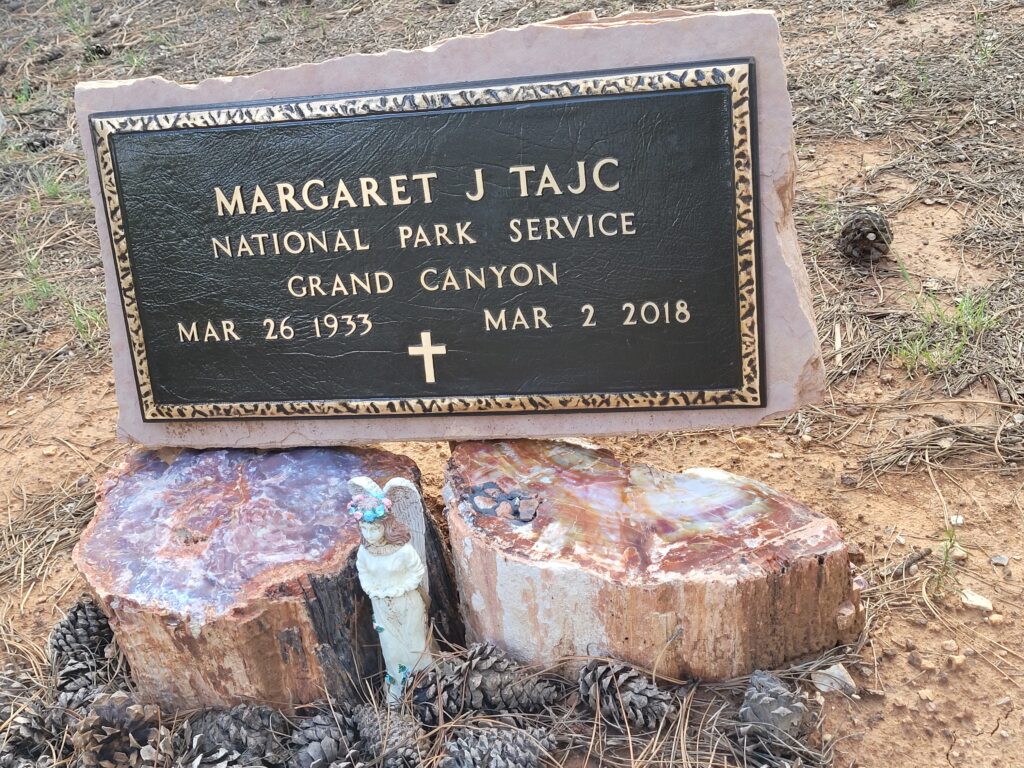
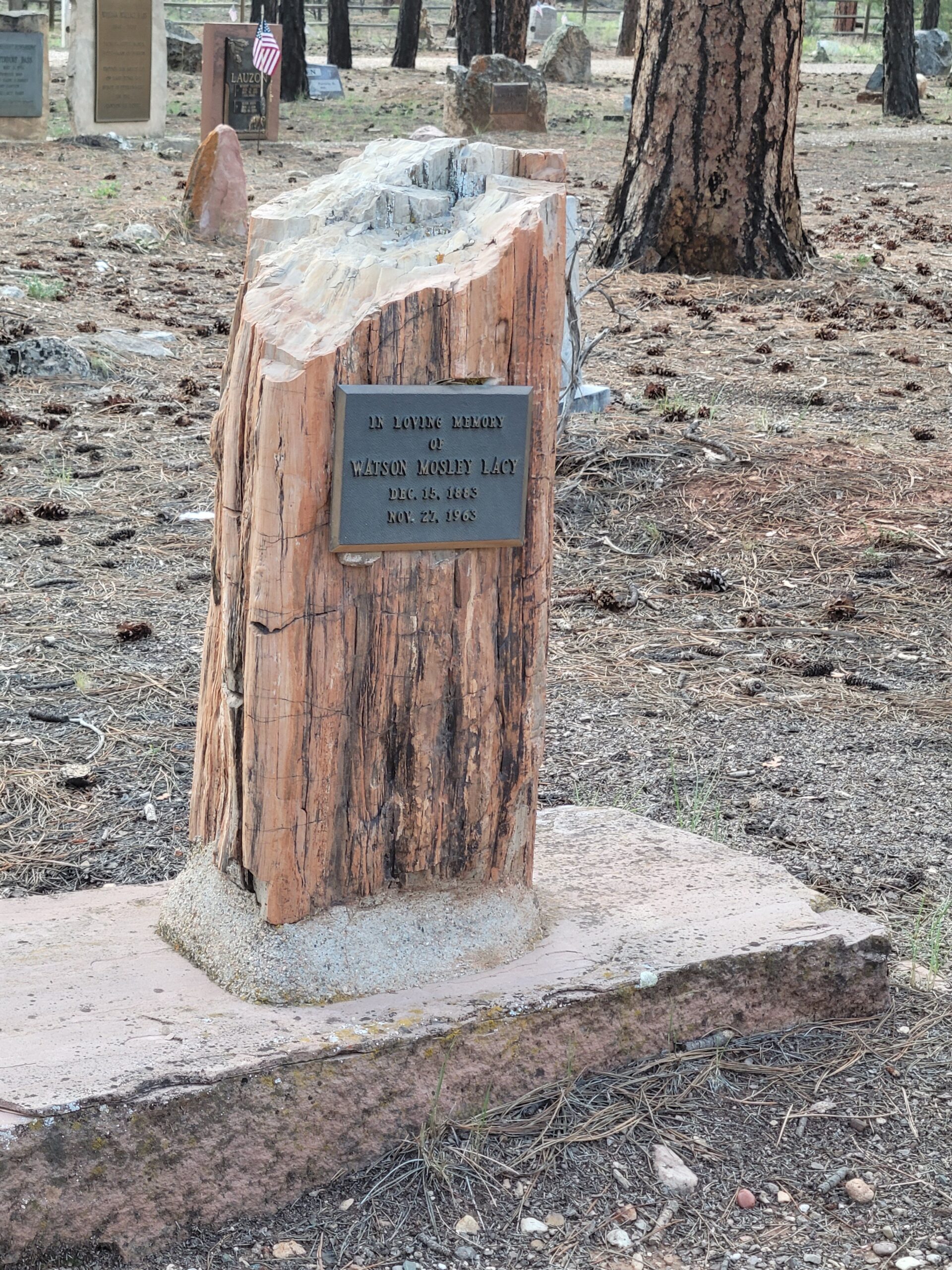



Granite Memorials
Granite is the most suitable material for Memorial making. It is preferred for its strength, durability and natural contrast. The Pioneer Cemetery features countless granite, governed-issued Veteran’s memorials, as well as personal memorials in all shapes, styles and sizes.
This Dakota Mahogany granite marker is especially interesting. The very first thing I notice is the use of Native American petroglyphs on the memorial.
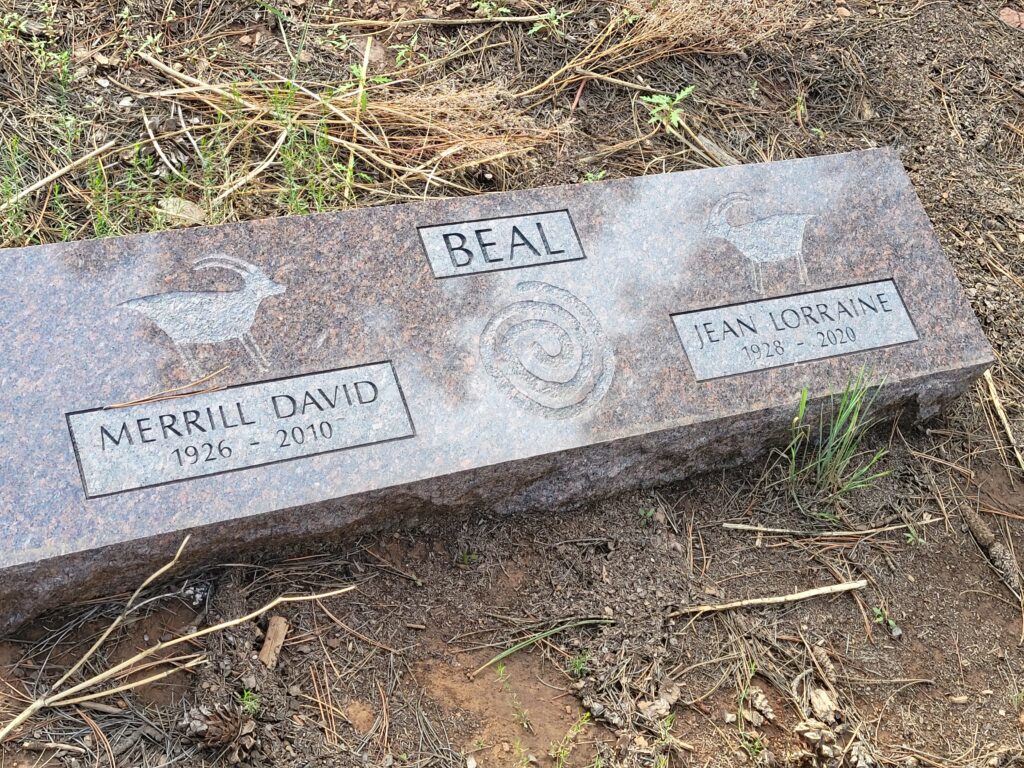
Memorials are meant to tell a story about the lives of the deceased. And this one certainly tells a story!
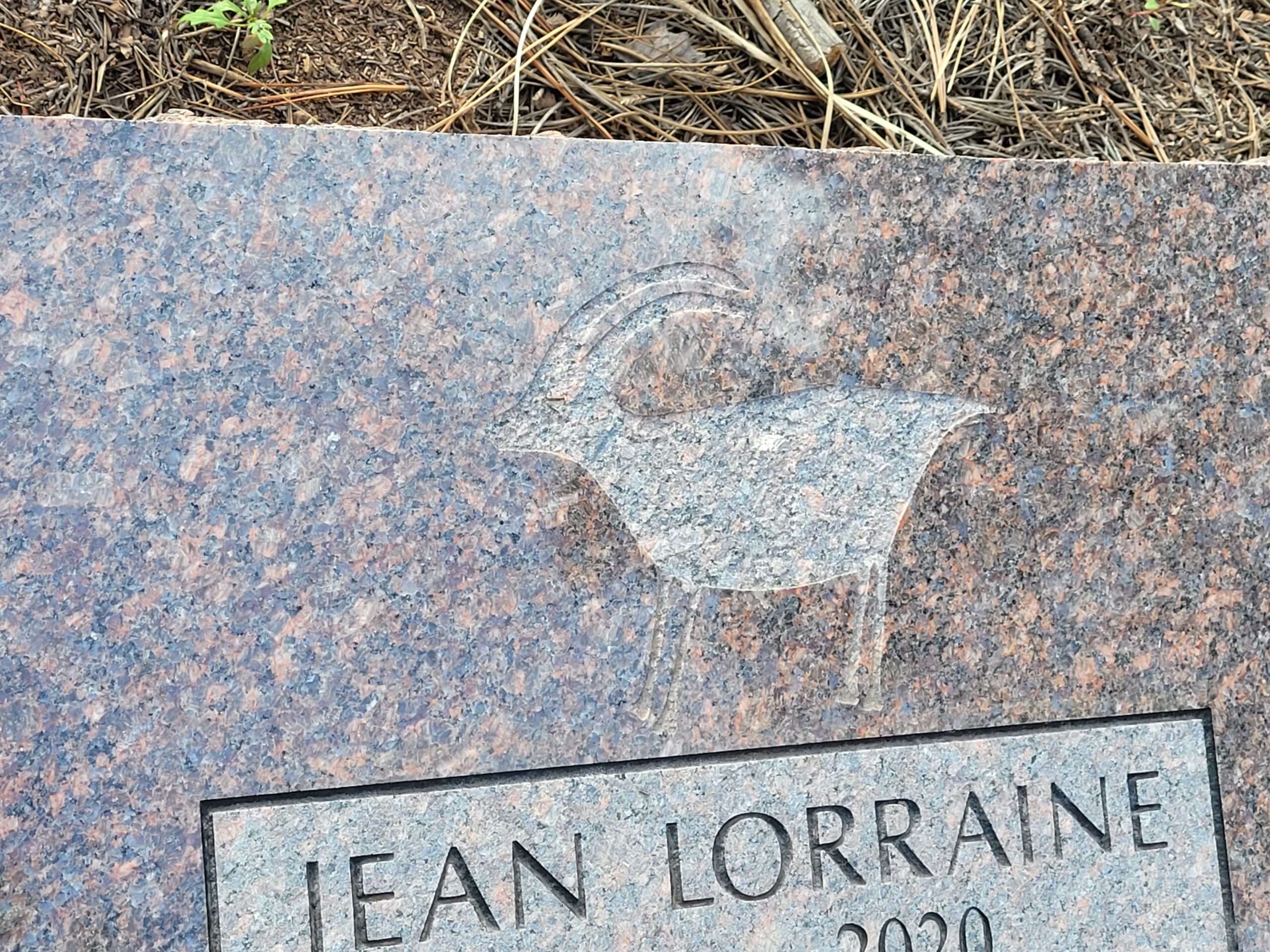
While I am not entirely sure what animal this symbol represents, I assume it is an antelope. I love how one indentical symbol is found above each individual’s name. The animals face inward, toward one another, on either side of their shared last name. This represents two lone animals who found one another and joined together.
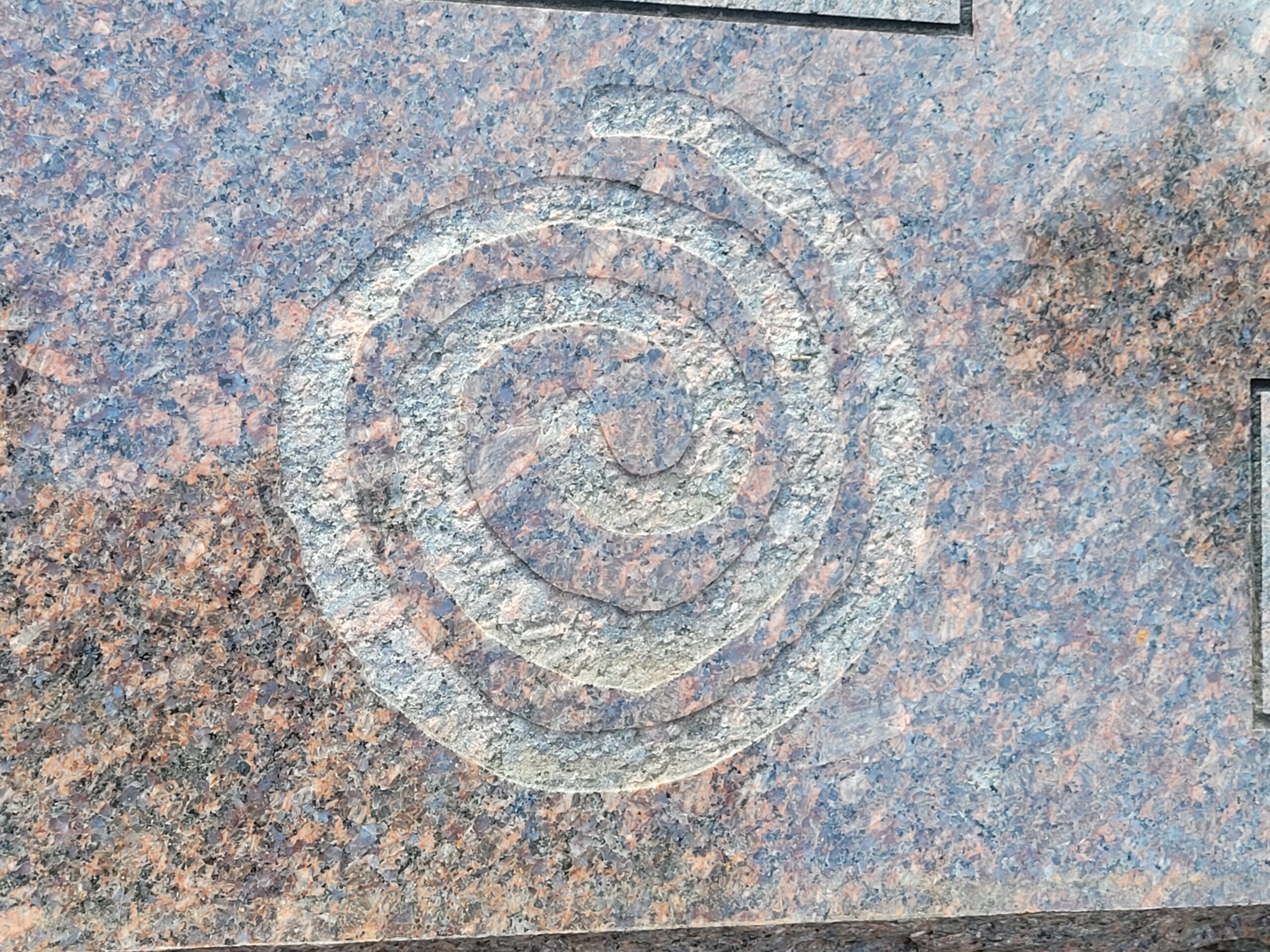
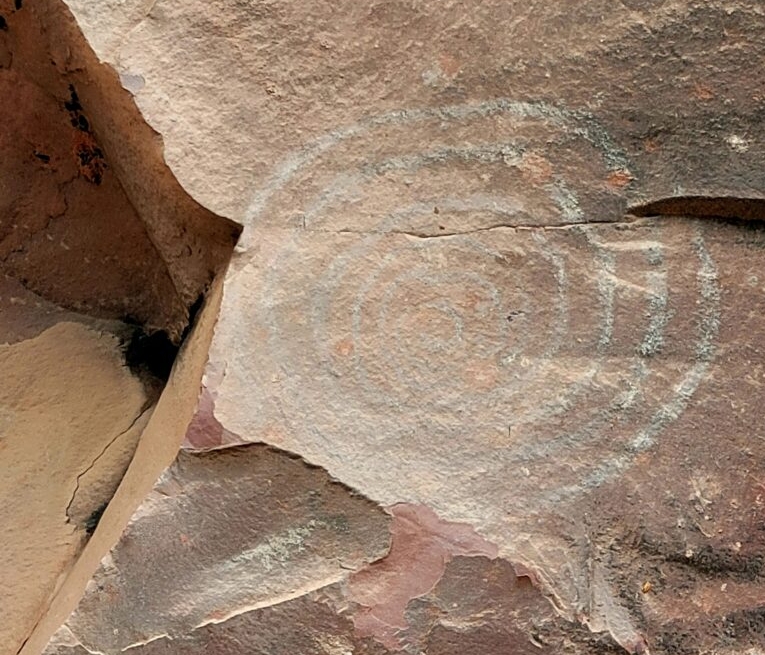
The migration symbol is fascinating! It was often drawn round like the one above, or even in a square type shape. It has a definate beginning, which is in the center, and a definate end. This symbolizes the beginning of life’s journey and its end.
What I interpret from this memorial is a story of two individuals, who found one another, and journeyed through life together.
To Honor is to Remember…
To honor is to remember. And to remember is to never forget.
-Unknown
What memorials at The Grand Canyon have captured your attention? Drop me a line and let me know!

